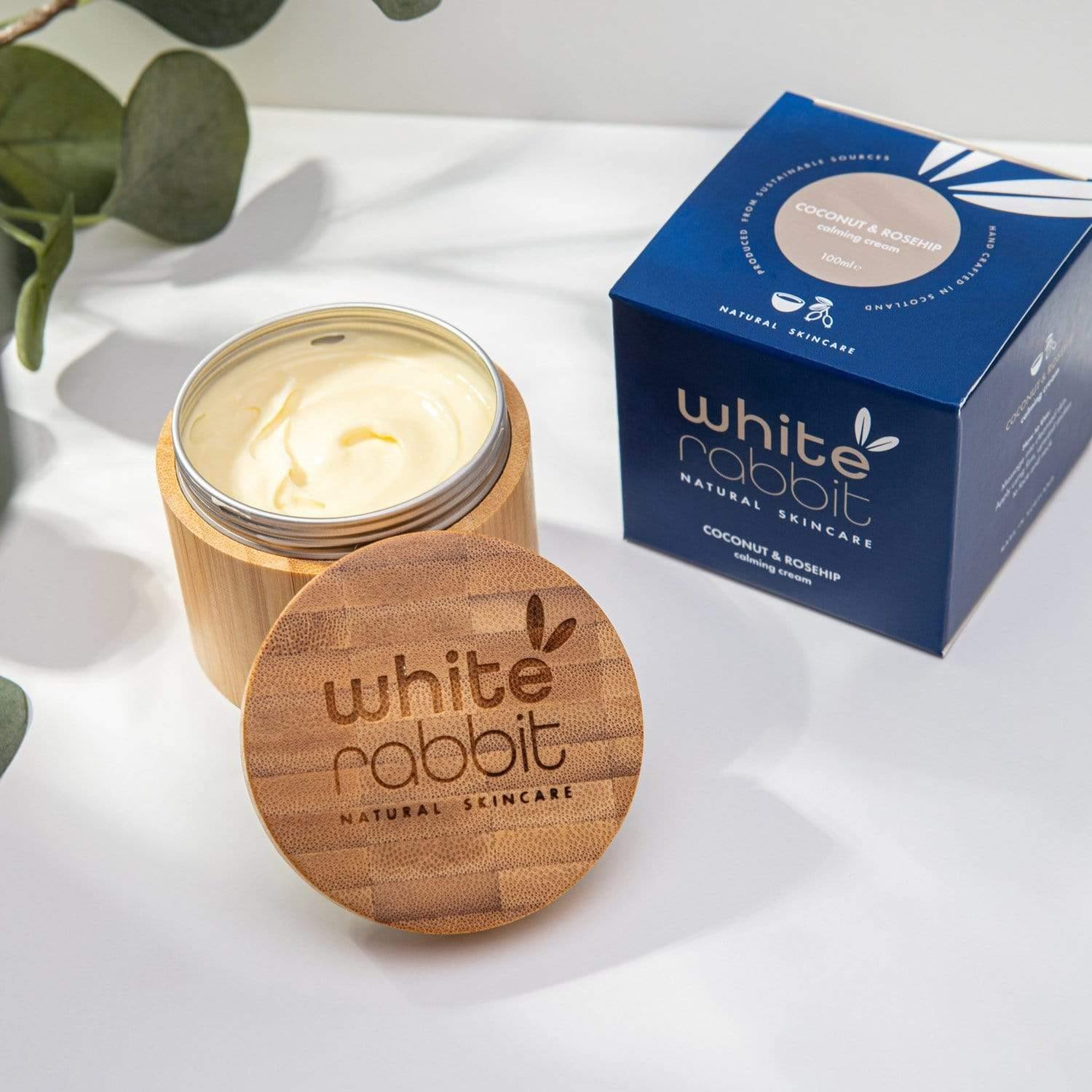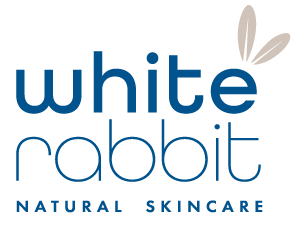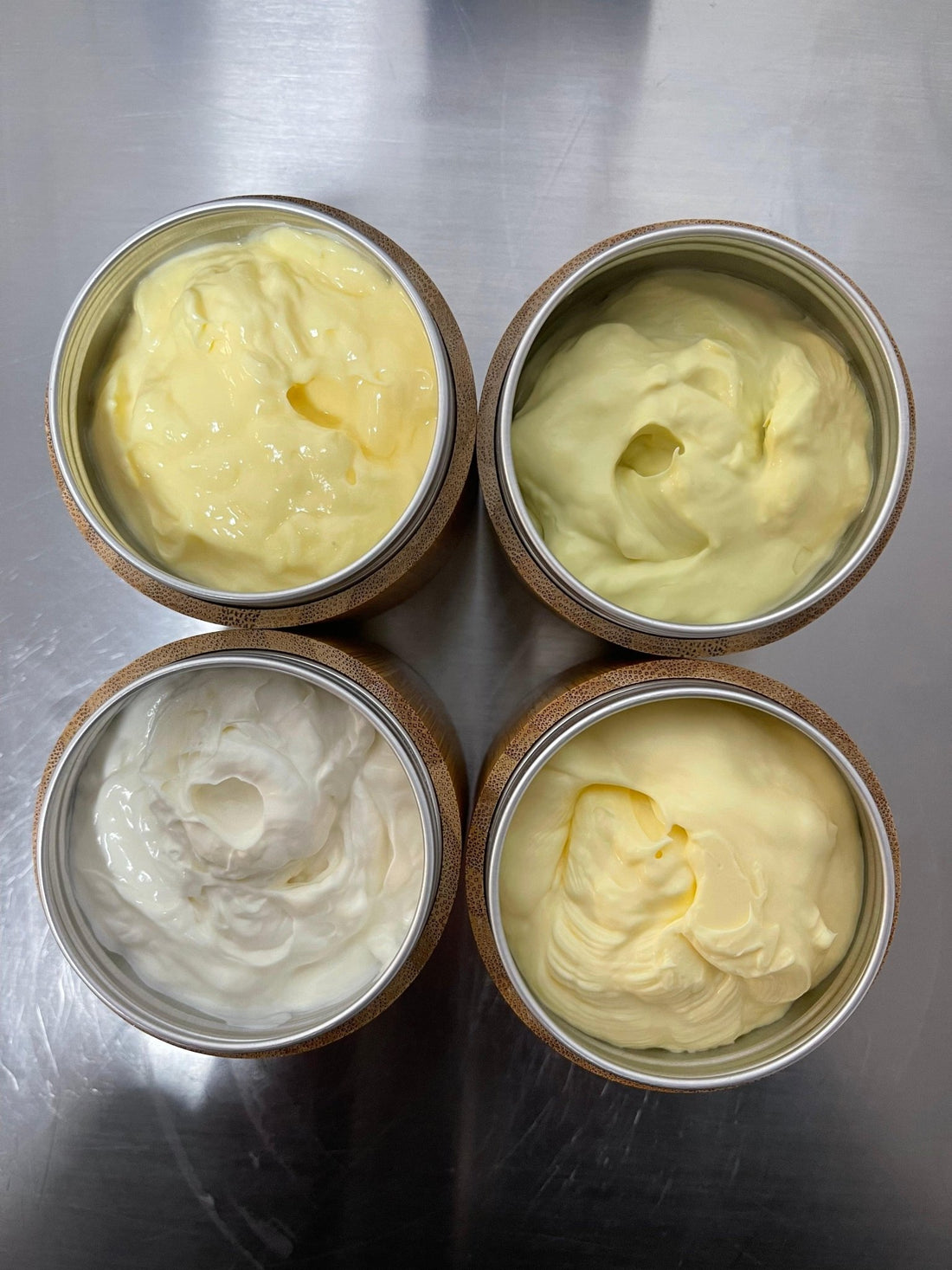Natural variation in skincare products
Occasionally we receive emails or messages on social media that note slight changes in our products, so we thought we’d do a blog post on why no two batches of our products - no matter what product type (from moisturiser to lip balm) - are ever the same
Sometimes our products melt, or vary in colour and scent, so we wanted to assure you that White Rabbit Skincare follows strict, chemist approved recipes, and that variation in our products is not an indication of quality changes in ingredients, but is the beauty of a truly natural product.
As consumers, we expect the ultimate consistency in skincare products. We expect the cosmetic products we buy from well-known high street brands to be exactly the same every time we buy them, and would probably be confused if we bought a product that we regularly used to find it was a different colour or had a slightly different smell, even when buying a “natural” product. Whilst we maybe wouldn’t leave a product out in the sun, we also wouldn’t expect it to melt or change consistency.
Is consistency an indicator of quality?
No, in fact it’s the opposite. Consistency is achieved through relatively cheap ingredients such as stabilisers, chemical emulsifiers, PEG colours and synthetic fragrance. The only function of these ingredients is to ensure consistency, not to do anything for your skin.
A huge percentage (the exact amount is often debated) of what you put onto your skin is absorbed into your bloodstream
If we really consider this, we should surely take the same care over what we put on our skin as we do for what we put in our body.
We are trained to expect consistency from skincare companies, and are naturally wary of changes in our skincare products. But we should question why we feel this way and whether the expectation of consistency is worth paying companies for products filled with ingredients whose only purpose is to ensure consistency.
A completely natural product is subject to some change each batch, especially when organic ingredients are involved, due to the lack of chemical intervention. Ingredients sourced from nature, which haven’t gone through any chemical process, will change depending on many factors, including yield, time of year, temperature and many more.
For example, if we pick two flowers from the same Orange Blossom Tree, they will be slightly different. One could be brighter or larger, one could have a stronger scent.
If we were to take two oranges from the same tree, they might vary in taste.
If we were to pick two oranges at different times in the year, or from two different trees, the taste might vary even more. One could be more exposed to sunlight, one could be taller - there are many reasons for variation.
So, when we make orange blossom water or orange essential oil, the natural variation in the orange flowers means there is variation in the colour and scent of each batch, and in turn there is variation in the products made with these ingredients.
We could add a chemical pigment called ‘CL 19140’, to make the finished product exactly the same, but we choose not to.
Shea butter is another interesting example. We buy unrefined shea butter from a like-minded small family company. The shea butter is scooped out of the shea nut and undergoes no chemical process whatsoever to end up in your products.
The shea butter is a natural product, made up of lots of different fats, which melt and solidify at different times and temperatures. If you ever buy raw unrefined shea butter, you might have wondered ‘why is my shea butter grainy?’, and this is why! The grains are simply harder bits of shea, and will melt when massaged into the skin.
Shea butter, like coconut oil, will melt or soften in warmer temperatures, so our products containing this ingredient can also melt or soften. This melting does not affect the quality or efficacy of shea butter or your product, it’s just an indication that the shea butter is raw. We could buy chemically ‘refined’ shea butter, but we choose not to.
So how do other companies ensure that each product is exactly the same?
Above, we mentioned the chemical ingredients that are often used in high street skincare ingredients. Stabilisers, like Xantham Gum, chemcial emulsifies, such as laureth-4, and many more potentially harmful ingredients, are used all over the world in skincare and cosmetic products.
What does natural mean to us at WRS?
No synthetic preservatives
No stabilisers
No synthetic fragrance
Whilst we follow strict recipes (in accordance with EU regulation), which never change, you can still expect variation in the products we send you. We are not taught to expect variation is cosmetics, and it can be inconvenient or odd when you receive something you've bought before to find that it is slightly different, but we hope you can see that it is simply due to the uniqueness and beauty in natural products.


